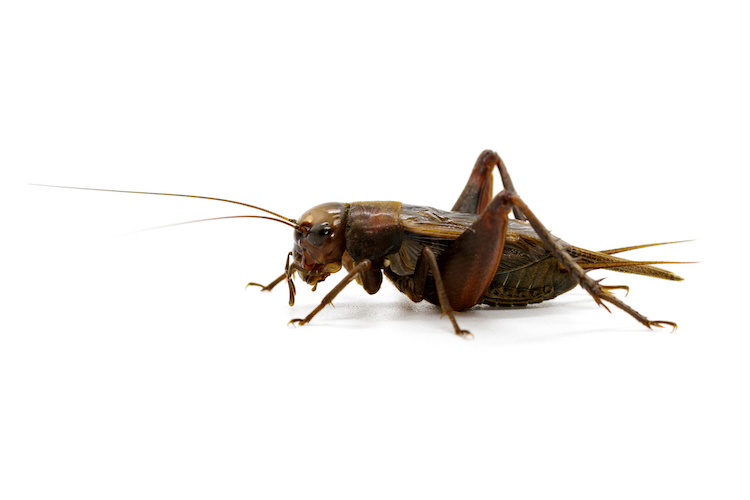Crickets may be small, but they sure know how to make themselves heard. Whether it’s the signature chirping that fills the night air or the sight of them hopping around your home, crickets are hard to ignore.
But what’s the story behind these noisy insects? How long do they live, and what makes their life cycle so unique? In this blog, we’ll break down the cricket lifespan, what factors influence their survival, and what to do if these critters decide to set up shop in your space.
The Cricket Lifespan: How It All Begins
The lifespan of a cricket starts small with an egg. These eggs are tiny and easy to miss but are the starting point for a cricket’s journey.
Female crickets lay their brood in damp, sheltered areas where the eggs can develop without being disturbed. Depending on the species and environmental conditions, the eggs can hatch in around two weeks.
Once the eggs hatch, the crickets enter the nymph stage. Nymphs resemble smaller versions of adult crickets but lack fully developed wings.
As nymphs grow, they molt several times, shedding their outer skin to accommodate their increasing size. With each molt, they edge closer to adulthood, gaining familiar features like their signature wings and strong jumping legs.
How Long is the Cricket Lifespan?

Now, let’s get into the nitty-gritty of the cricket lifespan. On average, adult crickets live anywhere from six weeks to three months. This can vary depending on a range of factors, including the cricket species, environmental conditions, and the availability of food and shelter.
In ideal conditions—warm weather, plenty of food, and minimal threats—a cricket can live a relatively long life for an insect!
However, these pests face plenty of obstacles that can cut their lifespan short. Predators like birds, spiders, and even small mammals see crickets as a tasty snack. Harsh weather conditions, lack of food, and, of course, pest control efforts also play a role in determining how long a cricket sticks around.
Several factors impact the cricket lifespan, and knowing these can help manage cricket infestations effectively. Here’s what you should know:
- Temperature: Crickets thrive in warm environments. They’re most active in the late summer and early fall when temperatures are high. In colder climates, crickets either die off or seek shelter indoors to survive. If they find a cozy spot in your home, their lifespan can extend significantly, as indoor environments offer the warmth they crave.
- Food Availability: Like all living creatures, crickets need a reliable food source to survive. In the wild, they feed on grasses, leaves, and decaying matter. Indoors, they’ll munch on fabric, paper, and even food scraps, making them less-than-welcome houseguests.
- Predation and Threats: Crickets are low on the food chain, so they’re always at risk of being eaten by larger animals. While some crickets may survive long enough to reproduce, many fall victim to predators before their natural lifespan runs its course.
Why Are Crickets Attracted to Homes?
Crickets aren’t picky about where they set up camp as long as the conditions are right. They’re attracted to homes for warmth, moisture, and easy access to food. When temperatures drop, crickets will head indoors to prolong their lifespan, seeking warmth in your home. Damp areas like basements, garages, and crawl spaces, especially those with leaky pipes, are perfect spots for crickets to lay their eggs.
Once inside, crickets do more than just chirp. They can damage fabrics, chew through paper products, and leave droppings that may attract other pests. If you’re hearing their telltale chirping indoors, it’s time to act before the problem escalates.
How to Manage Crickets in Your Home
Although crickets might seem less troublesome than other pests, an infestation can quickly turn into a headache. Their constant chirping can disrupt your sleep, and their habit of chewing on fabrics and paper can lead to real damage. At proof. Pest Control, we understand how frustrating this can be.
Here’s how we tackle cricket problems:
- Inspection: Our experts start by thoroughly inspecting your home to identify areas where crickets may be entering or nesting. We look for cracks in walls, gaps around doors and windows, and other entry points.
- Treatment: Once we identify the problem areas, we apply targeted treatments to eliminate crickets and prevent future infestations. Our products are tough on pests but safe for your family and pets.
- Prevention: Finally, we’ll help you schedule follow-up inspections to prevent these pests from coming back. Our goal is to keep crickets out for good and keep your home pest-free!
Cricket Control with proof. Pest Control

At proof. Pest Control, we know how to handle all types of pests, including crickets. Every home is different, so we customize our pest control plans to fit your needs. We aim to keep your home pest-free year-round, giving you peace of mind without the constant chirping.
Whether it’s a major cricket infestation or just a few intruders, our team is ready to step in. With proven methods, we’ll not only remove crickets but also make sure they don’t return. Our technicians are always available to offer tips on keeping your home cricket-free moving forward.
Don’t let crickets disrupt your peace. Reach out to proof. Pest Control, and we’ll take care of the problem so you can enjoy a quiet, pest-free home year-round.

